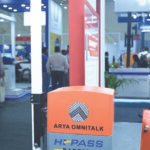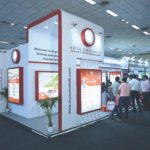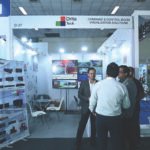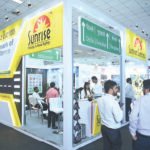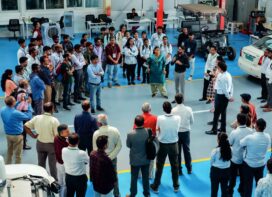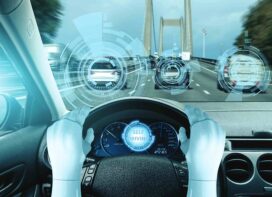- Sarvapriya Ratadiya
- Ajay Rao
- Prathvi Palekar
In order to reduce the congestion on toll plazas, B.E.A. Electronics, Singapore has a new solution that is based on laser Time of Flight technology. Discussing these developments, Sarvapriya Ratadiya, Sales Manager – South Asia & Middle East, said, “We have developed this product to sort out the issues related to high waiting time at toll plazas. The best part is that it solves not just the problem of congestion but also certain technical challenges related to vehicle separation, queue management on the toll lane etc.” Launched at the Expo, the product has great potential with laser technology, especially in lieu of the bulky and heavy infrared curtains. The company plans to introduce sensors with much bigger opening angles and better frequency for use in multi-lane free-flow applications.
For Ajay Rao, Head- Cards & Govt (India & Subcontinent) at Zebra Technologies, the focus at the Expo was displaying the RFID solutions that have around 70% of the market share with 25,000+ customers. “We are developing readers, and from a software perspective, if you have them installed in multiple locations globally, you can still manage them from a centralised location. You can see all the readers in one single dashboard and manage it from a single location.” There are many other RFID devices being launched according to customer requirements, including for manufacturing plants and warehouses.
Prathvi Palekar, Founder & CTO, Pixuate, focused on the behavioural habits of commuters through the company’s Speed Calming solution to deal with traffic violations. “The intention is to detect the violation and also display the message to the commuters coming so that they see their number plate and their violation, which has a psychological effect. This is a part of behavioural science, where the commuter will think of slowing down.” Pixuate is conducting a study to see the effects of such a system, but preliminary figures according to Palekar showed that 70% of drivers reduce their speed to within the speed limit. This includes low-light capture at speeds of 180 kmph with integrated triggers.
 TrafficInfraTech Magazine Linking People Places & Progress
TrafficInfraTech Magazine Linking People Places & Progress



